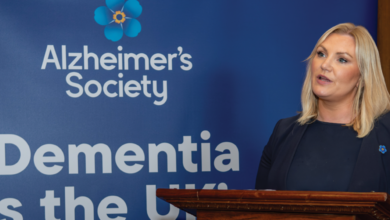Health inequalities 2020

While medical advancements have been credited as one of the core reasons people in Northern Ireland are living longer, latest figures from the Department of Health have highlighted the ongoing inequality in the health outcomes between the most and least deprived areas of Northern Ireland at both a regional and sub regional level.
Covid-19 and its long-term impact on public health, as well as the health service itself, will undoubtedly be a key factor in the delivery and analysis of health statistics in future. Globally, many countries have recognised a disproportionate effect on the most deprived communities by the virus. Differing health systems, physical geography and contrasting government approaches mean that it will likely take some time before data can be fully analysed to assess whether such a thread will be a constant for all countries.
For example, in early June, Public Health England found that people living in deprived areas were at greater risk of dying with coronavirus but research by the Public Health Agency for Northern Ireland found that affluent areas had shown a “small increase”, when compared to less well-off areas.
While it is too early to suggest that such a theme will be a constant, data gathered prior to the virus outbreak serves to highlight the ongoing gaps between health outcomes for the most and least deprived communities.
Broadly speaking, health outcomes across the population in Northern Ireland are improving, however, many major gaps remain among the least and most deprived for various indicators, continuing to widen in some instances.
A core example, whereby broad improvements or little change serve to mask somewhat existing inequalities, is in life expectancy statistics. In the most recent figures, gathered for 2016-2018, male life expectancy from birth has improved in both the most and least deprived areas, compared to figures for 2012-2014, while female life expectancy has remained constant. However, there remains a 7.1 year deprivation gap for males and a 4.4 year gap for females. Meaning that males and females living in the 20 per cent most deprived areas are estimated to live over seven years and four years less than those 20 per cent living in the least deprived areas.
Healthy life expectancy, a different statistic than the life expectancy from birth figures, also retained its inequality gaps, while there was a negative change in the most deprived areas for females. At the same time, disability free life expectancy changed negatively for males and females, with evidence showing a widening of the inequality gaps.
Regional health inequalities refer to the difference in health outcomes between the 20 per cent most deprived and 20 per cent least deprived areas of Northern Ireland.
In terms of rates of premature mortality, there was a general decrease across Northern Ireland including in its most and least deprived areas. Inequality gaps were narrowed but remained large. An example offered is that of respiratory mortality among under 75s, where the rate of deaths was over three times greater in the most deprived areas compared to the least deprived.
Alcohol specific mortality and alcohol related admissions are estimated to be some four times greater in the most deprived areas when compared to the least deprived.
Most indicators improved at a regional level for major diseases but the existing inequality gaps remained constant. There was an exception in incidence of cancer, where there was negative change in both the most and least deprived areas. The biggest inequality gap exists in admissions due to respiratory diseases, where the rate is doubled in the most deprived areas compared to the least deprived.
In relation to hospitals, most inequality measures narrowed with the exception of emergency care attendance and elective inpatient admissions, which remained similar. The largest inequality gap is noted in emergency admission, where the rate among those living in the most deprived areas is some 60 per cent higher than in the least deprived areas.
Mental health
Suicide rates in Northern Ireland’s most deprived areas are over three times higher in comparison to the least deprived areas, with the gap continuing to widen according the Department’s report. Large inequality gaps continue to exist across a range of other mental health indicators. There was a narrowing of the gap in relation to self-harm admissions, where positive change was recorded in both the most and least deprived areas, however, increases were recorded for both communities in prescription rates for mood and anxiety disorders.
Some of the largest health inequalities across Northern Ireland continue to be in relation to alcohol, smoking and drugs. Alcohol specific mortality and alcohol related admissions are estimated to be some four times greater in the most deprived areas when compared to the least deprived. Drug related admissions decreased across all areas but the death rate for drug related causes and drug misuse rose and the inequality gaps widened.
Sub-regional
In the 2020 annual report, analysis of the sub regional areas looks at both the Trust or the local government district areas (LGD) and compares them to either the regional average or to the 20 per cent most deprived areas within an area and the area’s average.
With the exception of the Belfast Trust, more inequality gaps widened than narrowed in the HSC Trusts and the same was true for the majority of LGDs, except for five.
Belfast Trust (32), Belfast LGD (32) and Derry City and Strabane (25) had a majority of health outcomes that were worse than the Northern Ireland average, compared to the likes of Lisburn and Castlereagh LGD, were no health outcomes were recorded as worse than the Northern Ireland average, and Ards and North Down, were just one outcome was recorded as such.
For male life expectancy, only the Southern Trust and Newry, Mourne and Down LGD experienced a narrowing of the inequality gap between the 20 per cent most deprived areas and the area average. For female life expectancy, the inequality gap between the 20 per cent most deprived areas and the area average widened in South Eastern Trust and in the Antrim and Newtownabbey; Armagh City, Banbridge and Craigavon; Belfast and Fermanagh and Omagh LGDs.
Drug related mortality was the largest inequality gap seen in three of the five HSC Trusts and nine of the 11 LGDs. According to the Department’s report, in the South Eastern Trust, the rate in its most deprived areas was more than two and a half times that of the Trust average. While in Lisburn and Castlereagh LGD the rate in the most deprived areas was almost three times the LGD average.
Suicide was another recognisable statistic where large inequality gaps exist and was among the five largest inequality gaps for Belfast Trust, as well as for Antrim and Newtownabbey and Mid Ulster LGDs.
Statistics taken from the Health Inequalities: Annual Report 2020, published by the Department of Health.





